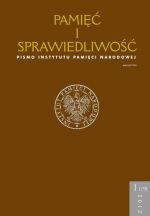Krakowska PZPR w okresie „małej stabilizacji”
ZPR (Polish United Workers’ Party) in Kraków in the period of “Little Stabilisation”
Author(s): Sebastian DrabikSubject(s): History, Recent History (1900 till today), Post-War period (1950 - 1989)
Published by: Instytut Pamięci Narodowej
Keywords: Polish United Workers’ Party; Kraków; political stabilization
Summary/Abstract: The Kraków structure of PZPR (Polish United Workers’ Party) was among the most important in Poland. October 1956 brought about significant personal movements within the Kraków branch of the party, a large group of its leaders being dismissed together with the first secretary of KW (Voivodeship Committee) Stanisław Brodziński, as well as many persons with roots in KPP (the pre-war Communist Party of Poland). For a longer time, until 1968, the party was not affected by any major crisis. From the beginnings of the 1960s, in the assessed voivodeship the numbers of party members and candidates rose importantly, from about 61,000 (in 1959) to over 110,000 (in 1969). Some of the old worthies (like Zofia Zemanek) disagreed with their removal to the margins of social life, subsequently they found a field of activity in the TPPR (Polish-Soviet Friendship Society). Also, the influence of activists who had emerged in the aftermath of October 1956, was successfully neutralised and weakened (Bernard Tejkowski, Marek Waldenberg, Zbigniew Jakus). The party certainly took advantage of the period of relative social calm, to stabilise its organisational/territorial structure with District, Municipal, City District, Plant and Basic Party Committees. The most important tool to exercise power used by the Kraków branch of PZPR, was the party apparatus and the system of “nomenklatura” (ruling class) enabling to create and control personnel policy in administration, economy, etc. The Kraków party was led in the assessed period by Bolesław Drobner, Lucjan Motyka and Czesław Domagała. Analysis of the regional structures of Poland’s communist party is an important, required direction of research.
Journal: Pamięć i Sprawiedliwość.
- Issue Year: 19/2012
- Issue No: 1
- Page Range: 85-105
- Page Count: 21
- Language: Polish

